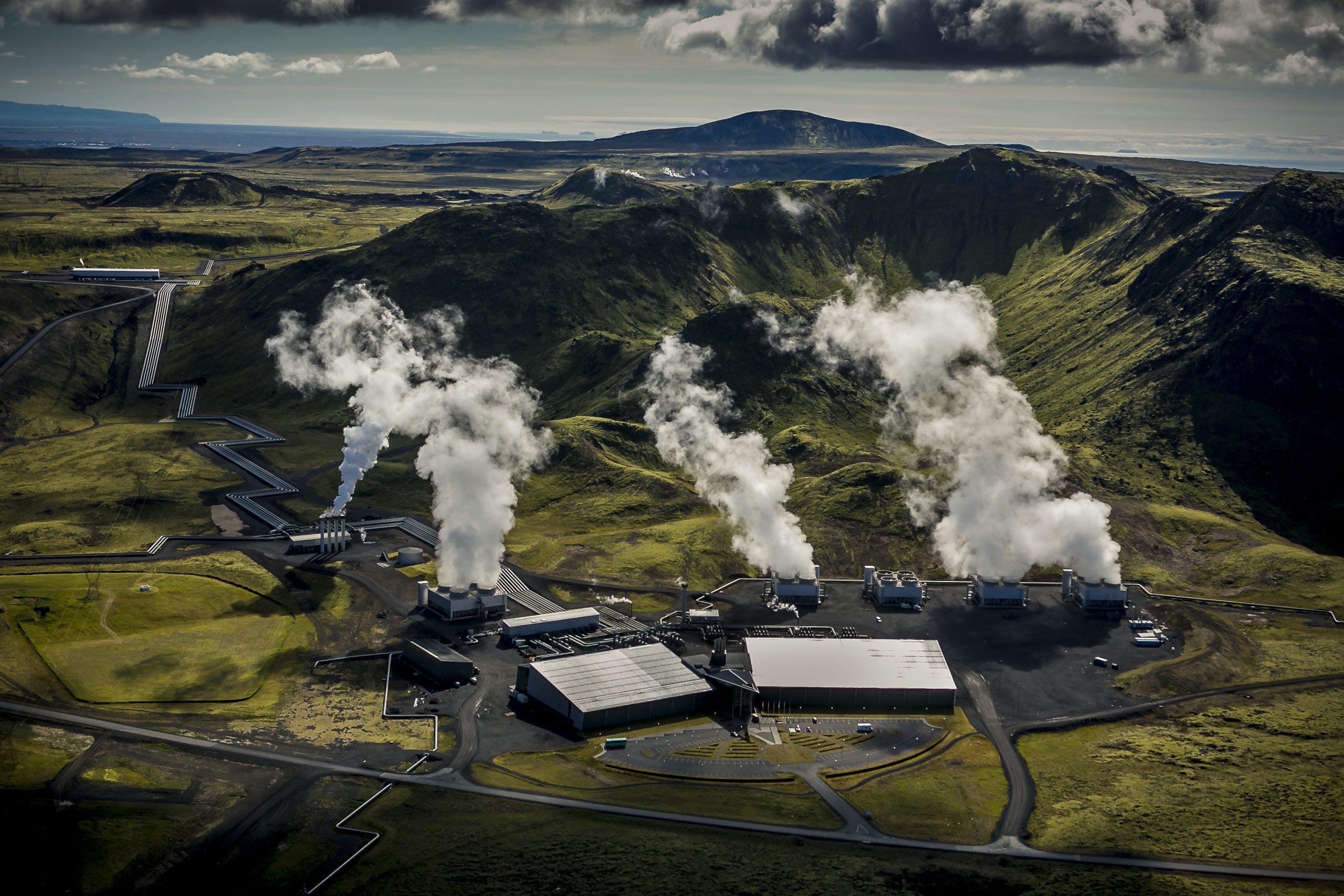Sustainability considerations in sourcing CO2 for Power-to-X
Published on July 16, 2021
This is Part 3 of our sustainability series to preview our upcoming publication about sustainability of Power-to-X and hydrogen. Read the introduction here. Visit our website regularly to stay up to date.
Power-to-X (PtX) technologies have the potential to play a crucial role in defossilising industries and meeting the climate goals. However, to ensure that PtX fuels and feedstocks are truly sustainable, it is necessary to assess how they are produced.
In the production process, a carbon source is needed, usually in the form of carbon dioxide (CO2). CO2 can be sourced from industrial processes (using industrial point sources), sustainable biomass, or from the atmosphere (using Direct Air Capture technologies – DAC). If carbon is captured and then directly utilised for any application (such as in the production of Power-to-X fuels and feedstocks) the process is called Carbon Capture and Utilisation (CCU).
The necessity of a closed carbon cycle
To produce sustainable PtX products from the catalytical conversion of CO2 and hydrogen, the CO2 used in the process must remain in a closed carbon cycle. This means using renewable carbon from biogenic or atmospheric sources without negative externalities (such as land use).
Biogenic residues as carbon sources
Biomass and biogas, and especially biogenic residues such as agricultural by-products and municipal waste, are promising as sustainable carbon sources for Power-to-X production.
Sourcing CO2 from industrial processes
CO2 can also be collected from industrial point sources. This means that CO2 is captured from industrial emissions, such as from a coal plant. However, this approach does not ensure a closed carbon cycle. Therefore, carbon sourced from industrial point sources cannot be considered renewable.
The use of point sources is problematic on many levels. Firstly, they impact industrial processes, considerably reducing their efficiency; and secondly, they have a lock-in potential for technologies that need to be phased out. In the medium-term, industrial processes that cannot be decarbonised – such as the production of cement – could be used as industrial point sources for the collection of CO2.
However, there is the risk of double counting. This means that CO2 which is captured and used for synthetic fuel production could count as an emissions reduction in multiple sectors. The cement industry is one example, as it can provide both an industrial point source for PtX and act as source of CO2 for producers of synthetic fuel [1].
Principles for ensuring sustainability
However, using industrial point sources offers the potential to recycle industrial carbon emissions. This means that they can be a valuable tool for partial emissions mitigation. Currently, there are many potential industrial point sources which allow for the fast upscaling of PtX production.
To ensure sustainability, the use of industrial point sources should adhere to the following principles:
• No modifications of industrial processes to artificially increase carbon production.
• An environmental burden-free preliminary process.
• Averting a lock-in effect: the CO2 production process should be unavoidable, otherwise an economic profit may arise from carbon emissions produced.
A legislative and investment framework for increasing fees on emissions and supporting the availability of low-carbon energy can sustainably encourage the uptake of using industrial point sources for Power-to-X.
DAC offers a fully closed carbon cycle
Only DAC offers a fully closed carbon cycle for PtX production. DAC filters CO2 from the air and, using hydrogen, PtX transforms the CO2 into synthetic fuels. This means that DAC offers the potential to reduce CO2 emissions by 100% in comparison to only 50% with industrial point sources.
With industrial point sources only 50% of the CO2 is recycled: The point source produces CO2 that isn’t already present in the atmosphere. This CO2 is captured and used to produce synthetic fuel. When the fuel is used to power, for example, a plane or ship, the CO2 is again emitted into the atmosphere.
Synthetic fuel produced by DAC also releases its CO2 into the atmosphere while in use. But the difference is that only CO2 which was previously removed from the atmosphere is being released – this ensures a fully closed carbon cycle.
Industrial point sources and Direct Air Capture in the short- and long-term
In the short-term, CO2 streams from industrial point sources might be used for PtX production. This would reduce the amount of fossil CO2 that is released into the atmosphere. The net impact of using industrial point sources for Power-to-X production should be assessed continuously and on a case-by-case basis as its potential for emission reduction largely depends on the gases emitted in each plant.
In the long-term, the availability of industrial point sources will be limited. To reach the climate goals set by the Paris Agreement, CO2 emissions need to be drastically reduced and this necessitates the closure of coal plants. From 2030 onwards, industrial point sources will no longer be able to meet the growing demand for CO2 [2].
DAC offers many advantages. It is not bound to a stationary industrial process, and it’s therefore possible to capture CO2 in remote areas. This enables fuel production that is decentralised and independent of location – which makes it particularly useful in remote areas with a huge potential for solar and wind power.
DAC is the sustainable and long-term option
In conclusion, with the development and maturing of technology, DAC will offer the best option for sustainable carbon sourcing.
Contributor to this article is Jan Eustachi.
Sources:
- (1) https://theicct.org/publications/co2-based-synthetic-fuel-assessment-EU
- (2) Climeworks https://www.slideshare.net/engineeringzhaw/climeworks-capturing-co2-from-air
- Identifying Social Indicators for Sustainability Assessment of CCU Technologies: A Modified Multi-criteria Decision Making. Parisa Rafiaani, Zoumpolia Dikopoulou, Miet Van Dael, Tom Kuppens, Hossein Azadi, Philippe Lebailly & Steven Van Passel
- Identifying Social Indicators for Sustainability Assessment of CCU Technologies: A Modified Multi-criteria Decision Making. Parisa Rafiaani, Zoumpolia Dikopoulou, Miet Van Dael, Tom Kuppens, Hossein Azadi, Philippe Lebailly & Steven Van Passel.
- https://ec.europa.eu/research/sam/pdf/sam_ccu_report.pdf
- https://www.sciencedirect.com/science/article/abs/pii/S1462901109000161
- https://www.sciencedirect.com/science/article/pii/S0009250914001699
